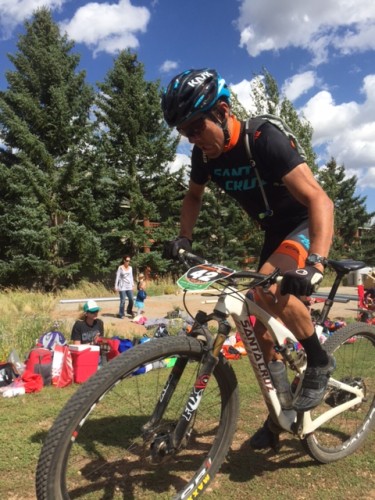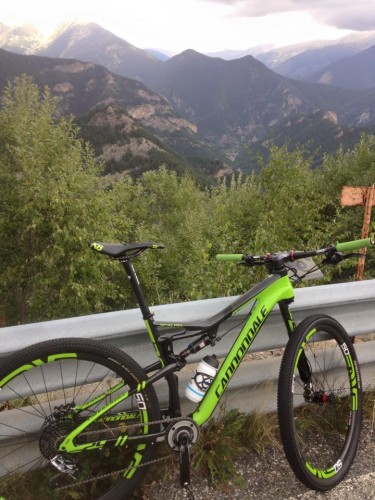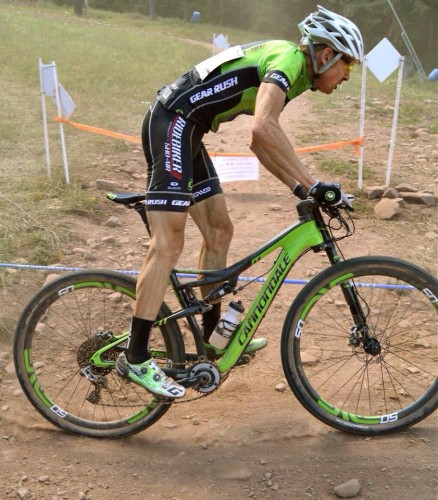Question: I plan on adding a few ultra-endurance races to my calendar this year – two 100 milers and a 100k race. I have only raced XC races as a Cat 1 racer. I have heard that many of the endurance races start fast to get good position in early singletrack. How do I work on my pacing to have a podium finish in the ultra-endurance races?
Answer: 100 km and 100-mile mountain bike races do start fast! To achieve your goal of a podium placement you do need to be able to start at a pace higher than is sustainable then be able to recover and continue at a sustainable race pace. It is exactly the same scenario as a cross-country race, just with the need to keep going longer after the fast start. This means you cannot dig as deep in an endurance race as a cross-country race at the start. Pacing is crucial.
Course design will dictate the optimal start strategy. In order to burn energy riding over a sustainable pace there must be a significant pay-back for that energy investment. Getting through an early bottleneck in front of a traffic jam is one significant reason. Staying with the lead pack and drafting on a long open section is another strategy that will give you a positive return on your investment.

One of the nation’s top ultra-endurance racers, Josh Tostado knows how to start fast and stay strong to the finish. Photo by: Shannon Boffeli
Training:
From cross-country racing you will already have good VO2max and threshold power and know how to start a race fast. First, what you need to add into your training is longer rides at an aerobic base pace of 56-86% of threshold power or heart rate zones 2-3 and then second, longer rides at race pace. Start with a 4 hour ride at aerobic base pace on the weekend while maintaining your typical cross-country training routine of race start practice, sprints, VO2max and threshold power work during the week. After getting a couple of 4-hour aerobic base pace rides under your belt, increase the pace of these longer rides and reduce your cross-country specific training to avoid becoming over-trained. A key training session is to warm up, ride a 4-6 minute VO2max pace effort, then drop into 100 miler race pace of 56 – 90% of threshold power. End this ride with a threshold power interval. If you have the energy left at the end of a 4 to 6 hour ride to put in an 8 to 10-minute effort at threshold power, you are race-ready for your podium hundie.
Pacing on race day:
Your goal at the start of an endurance race is to maximize strategic advantages and minimize the amount of time spent pacing above your sustainable race pace of 56-90% of threshold power. Every minute spent above 90% of threshold power at the start, reduces the opportunity for a strong finish. Ideally, stage as near to the front as possible and draft off the leaders for as long as possible. Save energy wherever you can. The length of time you should spend above 90% threshold power depends on your recent training, fatigue levels and personal abilities. It is never limited by motivation at the start of the race so watch your power meter and keep a lid on it! Pacing above 90% of threshold power at the start of a race when motivation is high and legs are fresh will feel easy so don’t trust your perceived exertion. Keep the amount of time above 90% of threshold power to less than 5 minutes in the first 30 minutes of the race. Spend this time wisely by ensuring you have a good return on your investment and are pedaling this hard for a tactical gain.
Once you have made it through the first course bottleneck or made the selection for the lead pack, settle into your race pace and focus on calorie, electrolyte and fluid intake to keep energy levels high. Keep cadence on the high side of your comfortable range in the first half of the race to put the work on your cardiovascular system and save your muscles for the second half for the race. Always save a little in reserve for a strong finish.
Lynda Wallenfels is a Category 1 certified USA Cycling coach. She coaches mountain bike, cross country and endurance athletes to personal bests and national championships. Lynda has been coaching off-road athletes for 18 years and racing for 20 years. Contact her through her website for information on mountain bike training plans, coaching and consulting at LWCoaching.com






